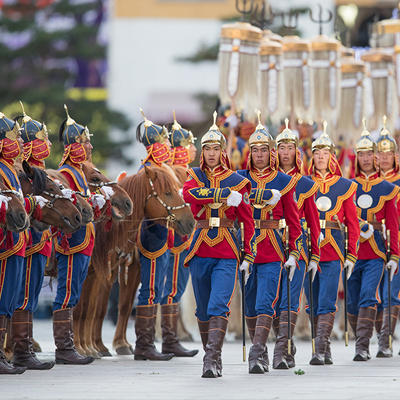
Horse culture of Mongolia
Horse culture
Horses hold a profound and intrinsic connection to Mongolian life and culture, woven deeply into the fabric of their history, identity, and daily existence. Here's an exploration of how horses are integral to Mongolian culture:
Historical and Cultural Significance:
- Nomadic Heritage: Mongolia's nomadic lifestyle, historically centered around herding livestock across vast steppes and terrains, heavily relies on horses. Horses enabled mobility, facilitating migration to new pastures and providing transportation for both people and goods.
- Military Tradition: Mongolian history is intertwined with the image of skilled horsemen and formidable cavalry. The Mongol Empire, under leaders like Genghis Khan and his successors, used mounted warriors to conquer vast territories, demonstrating the strategic importance of horses in warfare.
- Symbolism and Spirituality: Horses hold symbolic importance in Mongolian spirituality and folklore. They are revered for their strength, endurance, and agility, embodying qualities valued in both human and spiritual realms. Shamans traditionally communicate with spiritual forces while riding horses during rituals.
Practical Uses in Daily Life:
- Transportation: Even today, horses remain crucial for transportation in rural Mongolia, where roads can be sparse and terrain challenging. Nomads use horses for herding livestock, traveling between seasonal camps (called "ail" or "üüdel"), and accessing remote areas.
- Livelihood and Economy: Livestock herding, including horses, remains a primary economic activity for many Mongolian families. Horses provide milk (airag - fermented mare's milk), meat, and wool, sustaining livelihoods and traditional practices.
- Sports and Entertainment: Horseback riding is not only a practical skill but also a celebrated sport and form of entertainment in Mongolia. Traditional sports like horse racing, archery on horseback, and wrestling (often involving horsemanship) are central to festivals like Naadam, Mongolia's national games.
Cultural Expressions and Art:
- Art and Crafts: Horses feature prominently in Mongolian art and crafts, depicted in paintings, sculptures, and textiles. Mongolian artisans create intricate horse-themed designs in traditional clothing (deel), horse tack, and decorative items.
- Music and Dance: Horse-head fiddles (morin khuur) are iconic Mongolian musical instruments, symbolizing the bond between humans and horses. Horse-related themes are also found in traditional dances and songs, celebrating the beauty and spirit of the animal.
Challenges and Preservation Efforts:
- Environmental Concerns: Climate change and environmental degradation pose challenges to Mongolia's nomadic way of life, affecting pasturelands and livestock health, including horses.
- Cultural Preservation: Efforts are underway to preserve and promote Mongolian horsemanship, traditional breeding practices, and knowledge of horses among younger generations. Organizations and festivals dedicated to preserving equestrian culture play a vital role in this endeavor.
In essence, horses are not merely animals but integral partners in Mongolia's cultural identity, history, and daily survival. Their enduring presence reflects Mongolia's resilience as a nation shaped by its unique relationship with the land and its inhabitants.










.jpg)






















